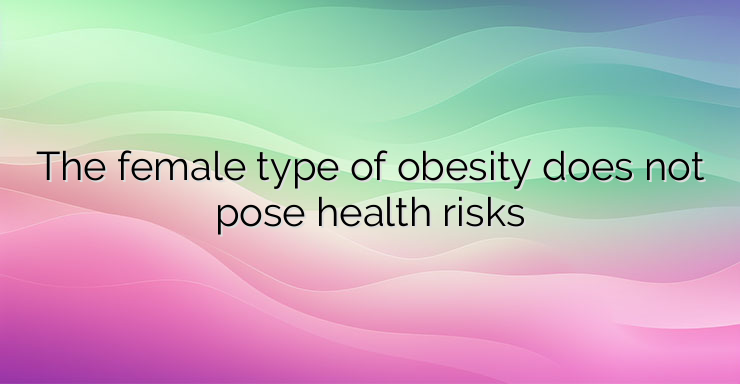Obesity is a condition of excessive accumulation of adipose tissue in the human body and usually has negative health consequences. Assessment of the degree of obesity is based on the so-called body mass index (BMI = kg/height2). There are three degrees of obesity: 1st degree with BMI between 30-34.9; II degree – BMI between 35-39.5 and III degree BMI ≥ 40. However, the calculation of the body mass index does not give us information about the distribution of adipose tissue. There are two main types according to this: Central type – accumulation of fatty tissue mainly in the abdominal area – the so-called. “apple shape”. Gluteo-femoral type – accumulation of fatty tissue in the area of the thighs and hips – the so-called “pear-shaped”. They have a corresponding gender distinction, for which male and female sex hormones play a major role. Testosterone is responsible for the redistribution of adipose tissue mainly in the abdomen and upper body, therefore this type of obesity is also called the android type. Female sex hormones, especially estrogens, are responsible for the redistribution of adipose tissue mainly in the lower part of the body, i.e. hips and thighs and therefore this type of obesity is called the gynoid type. What is the main difference between android and gynoid type of obesity? In the android type of obesity, there is an accumulation of adipose tissue mainly around the visceral organs. It contains more cells per unit mass, which are large in size, metabolically active and richly supplied with blood. Receptors for glucocorticoids, testosterone and catecholamines (beta-3 receptors) are located on their surface, upon activation of which lipolysis occurs. The released free fatty acids enter the liver directly through the portal circulation. As the largest endocrine organ, visceral adipose tissue is responsible for the onset of insulin resistance and compensatory hyperinsulinemia, disorders in lipid metabolism, diabetes mellitus, atherosclerosis and cardiovascular diseases. In the gynoid type of obesity, the fat cells are small in size and do not have the same metabolic profile. This is the reason why the gluteo-femoral type of fat redistribution is not associated with increased cardiovascular risk. Women under the influence of estrogen until the onset of menopause are protected from cardiovascular disease, unlike men, where testosterone and other factors predispose the excess accumulation of adipose tissue to be of the central type. After a woman enters menopause, this protective factor disappears and her cardiovascular risk equalizes that of a man. The android type of adipose tissue accumulation plays a peculiar role of a depot, which should be absorbed on days of fasting or reduced energy intake, i.e. in evolutionary terms, this has played an important role in the survival of the individual. The gynoid type of redistribution of adipose tissue is mainly related to the reproductive role of women.Adipose tissue mainly serves as an energy reserve for the fetus and the newborn in times of need during the periods of pregnancy, lactation and breastfeeding. NEWS_MORE_BOX How can we most easily determine which type of obesity we fall into? In clinical practice, there are several simple methods for quickly orienting to which type of obesity the examined person falls. They are: Abdominal circumference (waist) measurement – generally taken at the level of the navel. Measurement of hip circumference – performed at the level of the trochanters of the femur (the most prominent part on the lateral surface of the thighs). Waist/Hip Ratio (W/X). Increased abdominal circumference in women ≥ 80 cm is a sign of abdominal obesity, and ≥ 88 cm for excessive abdominal obesity. For men, the corresponding measures of abdominal circumference are: ≥ 94 cm and ≥ 102 cm. Calculating the waist/hip ratio is a simple, easy and sufficiently effective way to determine the type of obesity and the corresponding health risk. A sign of abdominal obesity is a T/X ratio > 0.9 in men and > 0.85 in women.


Leave a Reply